Don't wanna be here? Send us removal request.
Text
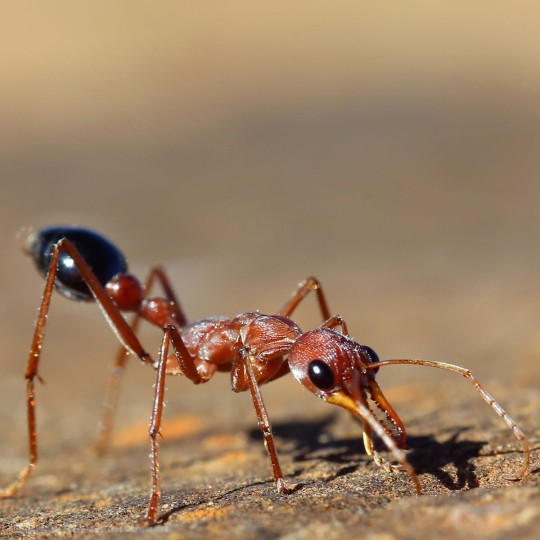
World's most beautiful girl looks at you with her huge autistic eyes while she stings you to death
890 notes
·
View notes
Text
poopy droopy
#ants#bugblr#myrmecology#entomology#antkeeping#insects#bugs#ant love#antblr#ant#april fools#april fools day
1 note
·
View note
Text
hehe is that a... Jojo reference?!?! So cool!!! +$100k coming your way
$100,000 to whoever draws an anthro version of this FLIPPING ant
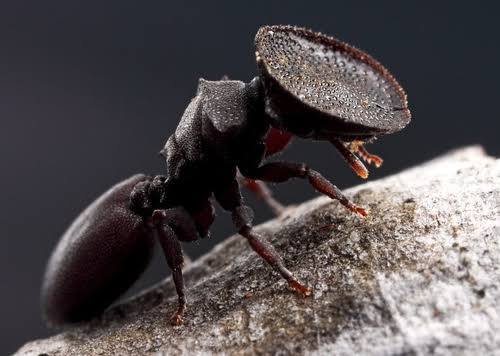
2K notes
·
View notes
Text
OMG SHES A BOUNCER!! Such a great piece of work, take the $100,000
Edit: whoops accidentally reblogged this on my ant blog lol
$100,000 to whoever draws an anthro version of this FLIPPING ant

2K notes
·
View notes
Text
Oh my god it's so surreal getting great artists drawing this silly ant... thank you so much!
$100,000 to whoever draws an anthro version of this FLIPPING ant

2K notes
·
View notes
Text
$100,000 to whoever draws an anthro version of this FLIPPING ant

2K notes
·
View notes
Text
Vote now! Last day! Get ready! Hop in! Get in losers! We're going voting! You don't have to be a New Zealander!
New Zealand Bug of the Year 2024! [VOTE!!]
The second Annual New Zealand Bug of the Year competition will soon be underway. Mark your calenders, and ready yourself for January 1, 2024 (or the day before for you day-behind losers)!
--------------------------------------------------
The Specifics:
The competition is being held by the Entomological Society NZ (ento.org.nz) and there are 20 bugs in the running. They include ancient ticks, glow-in-the-dark larvae, and cockroach-hunting wasps. You can suggest species for Bug of the Year 2025 here: https://bugoftheyear.ento.org.nz/recommendations/ (pssst, submit the Southern Ant!)
--------------------------------------------------
The list of species:
Globular Springtail (Dicytroma spp.) (Photo credit: Andy Murray)
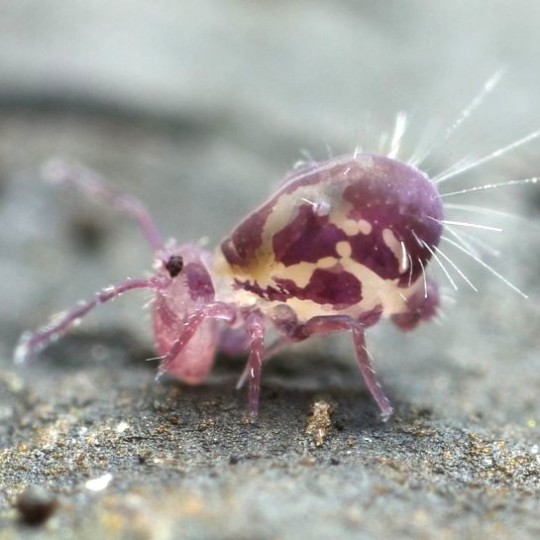
2. Minute Grasshopper (Sigaus minutus) (Photo credit: Danilo Hegg)

3. Rangatira Spider (Dolomedes schauinslandii) (Photo credit: Mark Anderson)
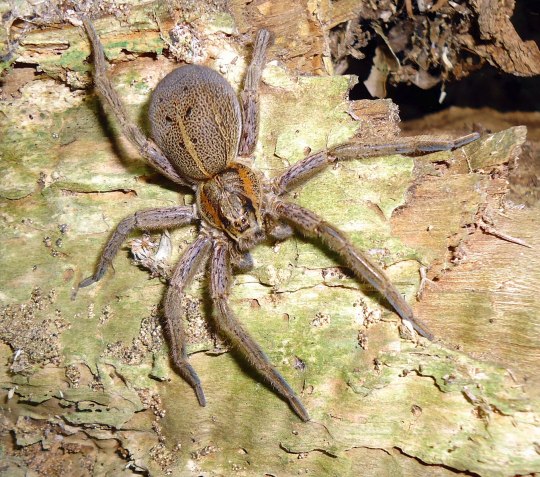
4. Orange-spotted Ladybeetle (Coccinella leonina) (Photo credit: John Sullivan)
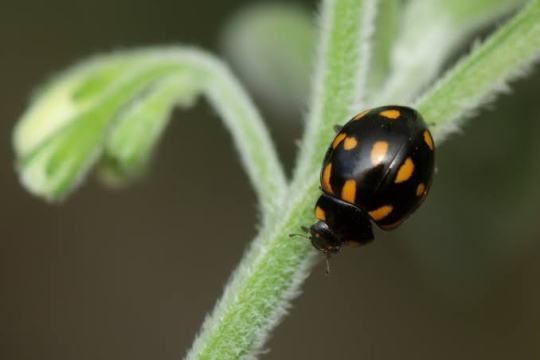
5. Tuatara Tick (Archaeocroton sphenodonti) (Photo credit: Rob Morris)

6. Cromwell Chafer Beetle (Cormocephalus rubriceps) (Photo credit: Danilo Hegg)

7. Katipō Spider (Latrodectus katipō) (Photo credit: Andrew Simpson)

8. New Zealand Glowworm (Arachnocampa luminosa) (Photo credit: Markus Nolf)

9. Hobbit Psylid (Psylla frodobagginsi) (Photo credit: Grey Smith)

10. Black Cockroach Hunter Wasp (Tachysphex nigerrimus) (Photo credit: Tony Wills)
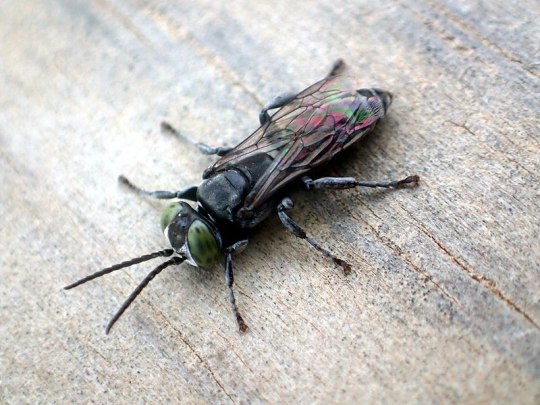
11. Forest Ringlet Butterfly (Pepe pouri) (Photo credit: ento.org.nz)
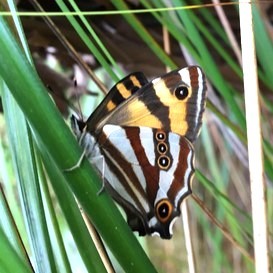
12. Carové's Giant Dragonfly (Uropatala carovéi) (Photo credit: 'Cheryl')

13. Scree Cicada (Māoricicada mangu) (Photo credit: William Harland)
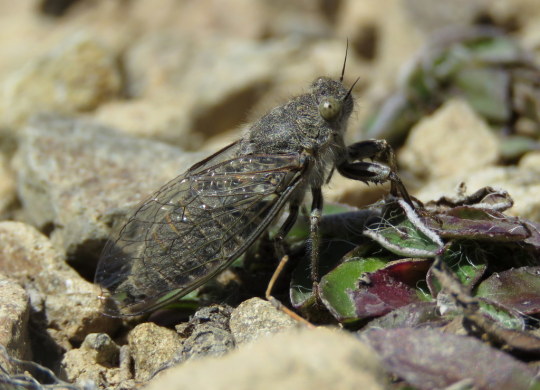
14. Giant Centipede (Cormocephalus rubriceps) (Photo credit: The late, the great Phil Bendle)
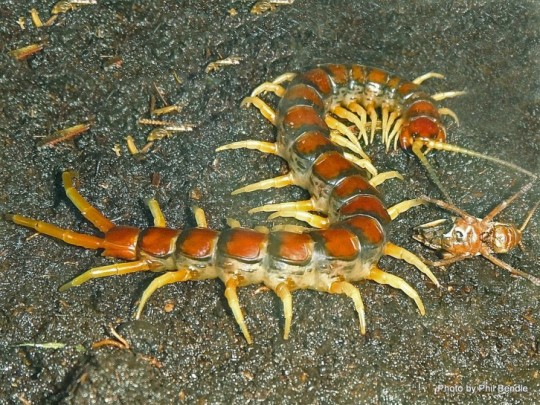
15. Mt. Cook Flea (Pharmacus montanus) (Photo credit: Danilo Hegg)

16. New Zealand Praying Mantis (Orthodera novaezealandinae) (Photo credit: the late, the great Phil Bendle)

17. Superb Giant Land Snail (Powelliphanta superba) (Photo credit: Rob Morris)
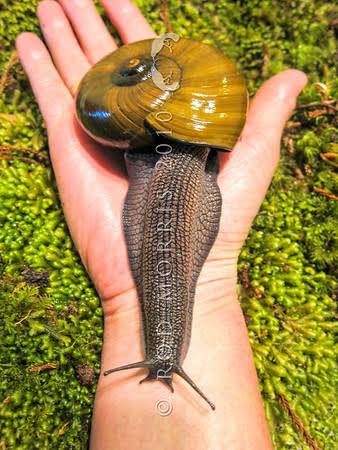
18. New Zealand Red Admiral (Vanessa gonerilla) (Photo credit: Tony Wills)
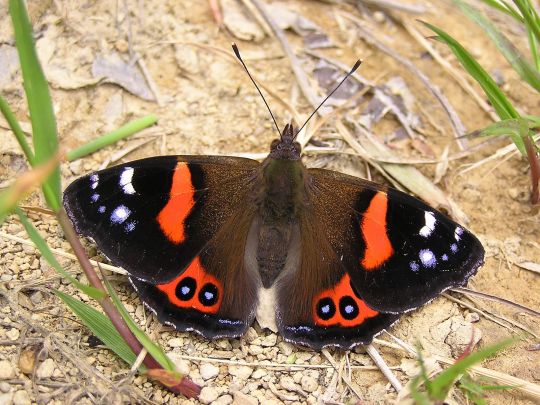
19. Mount Arthur Giant Wētā (Deinacrida tibiospina) (Photo credit: Carey-Knox-Southern-Scales)

20. New Zealand Velvet Worm (Peripatoides novaezeelandiae) (Photo credit: Frupus)
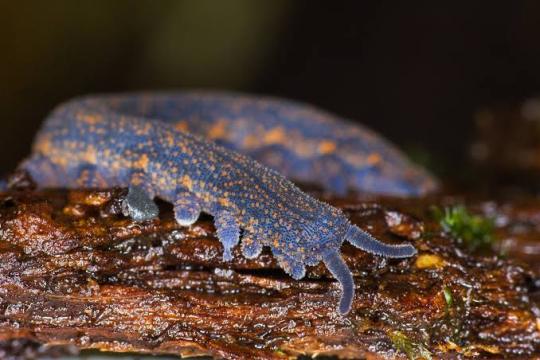
--------------------------------------------------
And, there you have it. Go out and vote, folks!
https://bugoftheyear.ento.org.nz/
#bugblr#insects#bugs#entomology#nz bug of the year 2024#bug of the year#cool bugs#please vote#i beg of thee#have sympathy for me
18 notes
·
View notes
Text
The Most Rarest, Ancient Ants and The Quest to Rediscover Them
Australia is home to a wide range of ant species. One that might spring to mind is the Bulldog/Jack jumper ant, genus myrmecia.
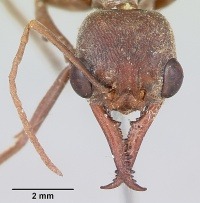
(M. gulosa, "Hoppy Joe!")
As you can see, these ants have quite big eyes. This is because bulldog ants are very dependant on vision, something most other ant species have replaced with pheromonal (scent) trails.
But we aren't here to talk about them. We're here to discuss their cooler, shady cousin,
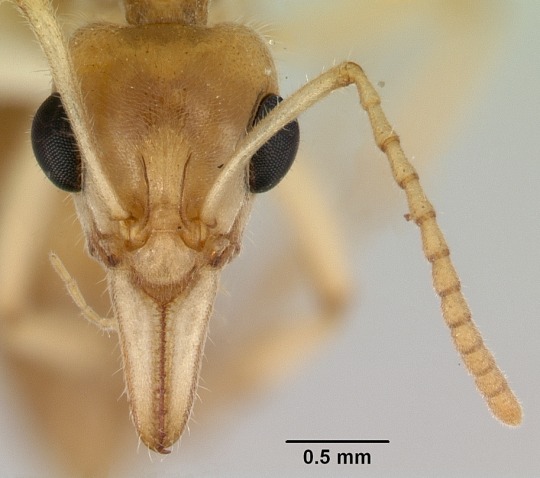
the Dinosaur ant (Nothomyrmecia macrops).
They might look all cute, but they are much more than that.
These ants are possibly the rarest and most primitive of all ant species, and this shows in their behaviour.
Like the Bulldog ant, these ants rely only on their vision as apposed to pheromones. Colonies only range from 50-100 individuals, when most ant species have colonies in the thousands. Furthermore, queens only lay one generation of eggs every year!
Because of this small size, workers can not effectively compete with other species such as Camponotus and Iridomyrmex. Thus, these ants are exclusively nocturnal so they don't have to hunt alongside the diurnal ant species.
Infact, the Dinosaur and Bulldog ant are so similar that the Dinosaur ants genus name, 'Nothomyrmecia', means 'False Bulldog ant'. The species name, 'macrops', means 'big eyes'.
--------------------------------------------------
This species was first discovered in the form of two worker specimens by Amy Ena Crocker and colleagues, supposedly inland from Israelite Bay in Western Australia.
Due to its primitive appearance and unique body shapes, scientists were eager to find more specimens. Many expeditions were set out to locate this ant over the next three decades, all of which failed. One of the more notable expeditions was lead by the late, the great entomologist E. O. Wilson (who literally invented sociobiology!!!)
However, on October 22, 1977, entomologist Robert W. Taylor and colleagues would rediscover a lone worker in Poochera, South Australia. I'll let nullarbor.net take it away:
"Spurred on by rumours that an American scientist was coming to search for the lost ant, Dr. Taylor apparently mounted one last ditch attempt to beat the Americans to the punch. By an incredible stroke of good luck - if it could be called that - Dr Taylor and his group were driving to Western Australia when their vehicle struck mechanical problems at Poochera. As we all know, even the best laid plans can go astray, and Dr. Taylor's expedition was forced to make an unscheduled stop, and camp for the night at Poochera.
"Later that evening Dr. Taylor conducted an impromptu insect survey in the mallee scrub adjacent to camp. There's no doubt the last thing on Dr. Taylor's mind was Nothomyrmecia - after all, the last and only recorded sighting was made 46 years earlier, and even that was fully 1300 kilometres away to the west. Poochera was definitely the last place where Dr. Taylor expected to find Nothomyrmecia - but there it was, one solitary Nothomyrmecia worker ant crawling on a eucalyptus tree trunk.
"The sight was truly astonishing. Dr. Taylor then rushed back to his colleagues and in true Australian style he announced to the world, "The bloody bastard's here! I've got the Notho-bloody- myrmecia!"
I'd like to imagine that's true.
Poochera, which features Nothomyrmecia abundantly in the streets, is perhaps the only town I know of that survives exclusively off of ant tourism.
See you soon.
#ants#myrmecology#bugblr#entomology#antkeeping#insects#bugs#ant love#antblr#ant#nothomyrmecia#nothomyrmecia macrops
32 notes
·
View notes
Text
shhhhhh
I'm done with this blog. I just can't take it.
You Fuckers will upvote anything that is an isopod or moth. You simpletons.

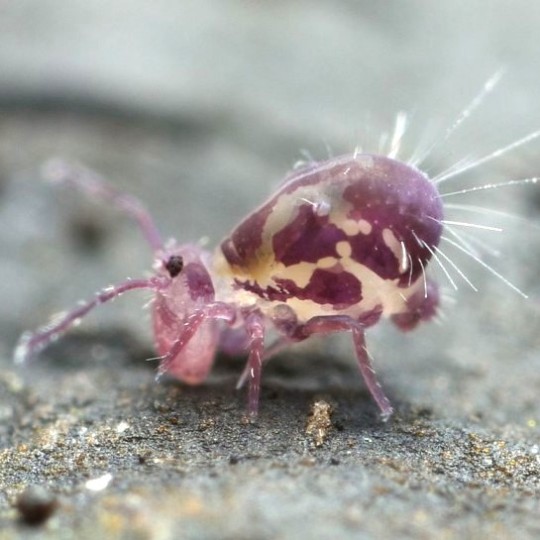
Just take it. I don't even know what these ones are, I just found them on my camera roll.
92 notes
·
View notes
Text
I'm done with this blog. I just can't take it.
You Fuckers will upvote anything that is an isopod or moth. You simpletons.


Just take it. I don't even know what these ones are, I just found them on my camera roll.
92 notes
·
View notes
Text
Fuck you. Think you're funny tagging me in non-ant related posts. All high and mighty on your little baby highchair.
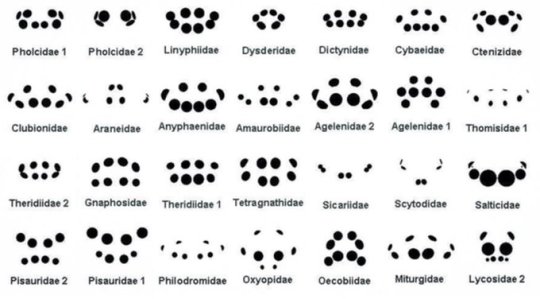
spider eye arrangements
#ants#myrmecology#antkeeping#bugblr#entomology#ant love#insects#bugs#antblr#ant#okay fuck you asshole
39K notes
·
View notes
Text
this is an ant blog not a fucking wasp blog you absolute idiot


this from the guy who wrote the sting pain index, a scale he constructed after letting himself be stung by insects
142K notes
·
View notes
Text
New Zealand Bug of the Year 2024! [VOTE!!]
The second Annual New Zealand Bug of the Year competition will soon be underway. Mark your calenders, and ready yourself for January 1, 2024 (or the day before for you day-behind losers)!
--------------------------------------------------
The Specifics:
The competition is being held by the Entomological Society NZ (ento.org.nz) and there are 20 bugs in the running. They include ancient ticks, glow-in-the-dark larvae, and cockroach-hunting wasps. You can suggest species for Bug of the Year 2025 here: https://bugoftheyear.ento.org.nz/recommendations/ (pssst, submit the Southern Ant!)
--------------------------------------------------
The list of species:
Globular Springtail (Dicytroma spp.) (Photo credit: Andy Murray)

2. Minute Grasshopper (Sigaus minutus) (Photo credit: Danilo Hegg)

3. Rangatira Spider (Dolomedes schauinslandii) (Photo credit: Mark Anderson)

4. Orange-spotted Ladybeetle (Coccinella leonina) (Photo credit: John Sullivan)

5. Tuatara Tick (Archaeocroton sphenodonti) (Photo credit: Rob Morris)

6. Cromwell Chafer Beetle (Cormocephalus rubriceps) (Photo credit: Danilo Hegg)

7. Katipō Spider (Latrodectus katipō) (Photo credit: Andrew Simpson)

8. New Zealand Glowworm (Arachnocampa luminosa) (Photo credit: Markus Nolf)

9. Hobbit Psylid (Psylla frodobagginsi) (Photo credit: Grey Smith)

10. Black Cockroach Hunter Wasp (Tachysphex nigerrimus) (Photo credit: Tony Wills)

11. Forest Ringlet Butterfly (Pepe pouri) (Photo credit: ento.org.nz)

12. Carové's Giant Dragonfly (Uropatala carovéi) (Photo credit: 'Cheryl')

13. Scree Cicada (Māoricicada mangu) (Photo credit: William Harland)

14. Giant Centipede (Cormocephalus rubriceps) (Photo credit: The late, the great Phil Bendle)

15. Mt. Cook Flea (Pharmacus montanus) (Photo credit: Danilo Hegg)

16. New Zealand Praying Mantis (Orthodera novaezealandinae) (Photo credit: the late, the great Phil Bendle)

17. Superb Giant Land Snail (Powelliphanta superba) (Photo credit: Rob Morris)

18. New Zealand Red Admiral (Vanessa gonerilla) (Photo credit: Tony Wills)

19. Mount Arthur Giant Wētā (Deinacrida tibiospina) (Photo credit: Carey-Knox-Southern-Scales)

20. New Zealand Velvet Worm (Peripatoides novaezeelandiae) (Photo credit: Frupus)

--------------------------------------------------
And, there you have it. Go out and vote, folks!
https://bugoftheyear.ento.org.nz/
#bugblr#insects#bugs#entomology#nz bug of the year 2024#bug of the year#cool bugs#please vote#insect#beetle#isopods#antblr#butterfly
18 notes
·
View notes
Text
Ants are so cool, they even have copycats!
another ant mimic jumping spider from Singapore. this one might have been the most antlike out of any spider I’ve ever seen, with a little crease on its opisthosoma to look like an ant’s segmented abdomen and posterior lateral eyes set to look like an ant’s angular head!

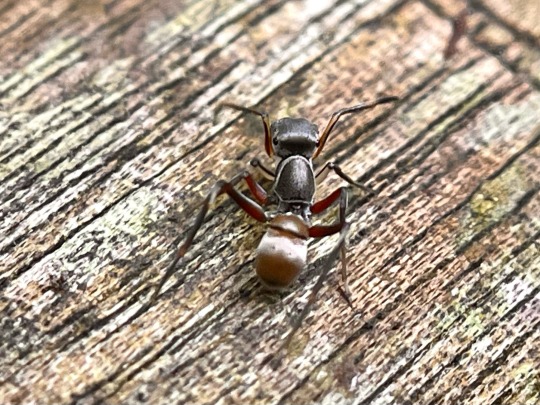
Myrmaplata sp.
9K notes
·
View notes
Text
the worker doesn't fall far from the queen.
common ant sayings
"A springtail in the mandibles is worth 2 in the leaf litter"
"time files when you are applying yourself most efficiently to benefit the colony."
"A major and her honeydew drop are soon parted."
"I'd give an antennae and a leg for a chance."
"you're stridulating up the wrong termite mound"
"A watched pupae never ecloses."
"It ain't over till the repleate stridulates"
"When isopods fly"
"you can carry an aphid to a leaf but you can't make 'em drink."
"she showed her true pheromones"
#ants#bugs#antposting#insects#bugblr#invertebrates#ant#myrmecology#antblr#antkeeping#inspiring quotes#inspiration
539 notes
·
View notes
Text
Weird ants (?) #4: The antlion

Surprisingly, this insect is neither a lion nor an ant. So how did it get this name?

This is an antlion larvae. The larvae construct inconspicuous traps in sand--

-- like this one. Laying patiently buried amongst the soil, the antlion detects the vibrations from the innocent pitter patter of a small driver ant -- Dorylus helvolus-- and readies itself.
The meek worker is confident yet unsure; exploring the new turf is a dangerous task. She couldn't have done much. Like merely losing your foothold on a lining of wet pebbles along a river's banks, she goes careening into the funnel.
The antlion is quick to the hunt. He stops her escape attempts in its tracks by hurling sand up at her, causing a slip in the already loose sand she must maneuver upwards. Scrambling.
When he gets a grip around her using his mandibles, the venom is released and the driver ant knows its fate is sealed. The kraken dredges the vessel down into the depths of the substrate, where any record of life is lost.
The empty carcass is deposited at the foot of the trap, pheromones only attracting more ants.
Pretty cool :)
#ants#bugblr#myrmecology#antkeeping#entomology#insects#ant love#bugs#antblr#antlion#ant life#skibidi fanart#short story#fanfic
26 notes
·
View notes
Text
Sorry their hasn't been much activity lately, I've been swamped with work :(((
HOWEVER, here is a photo of the trap jaw ant, genus odontomachus:

They have crazy long antenna to detect prey, and then they use their trap jaws to slam towards the prey at 120 m/h (193 km/h). They actually have to both push and pull their mandibles together so that they don't rip themselves apart! Found in tropical and subtropical regions around the world.
13 notes
·
View notes